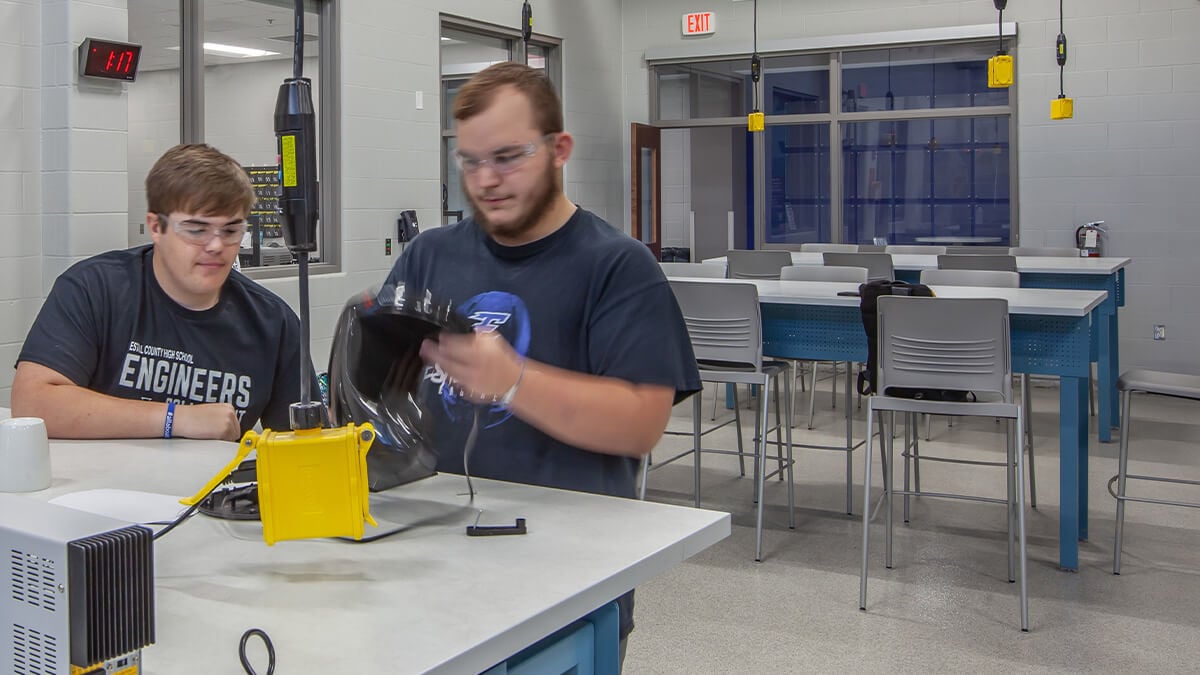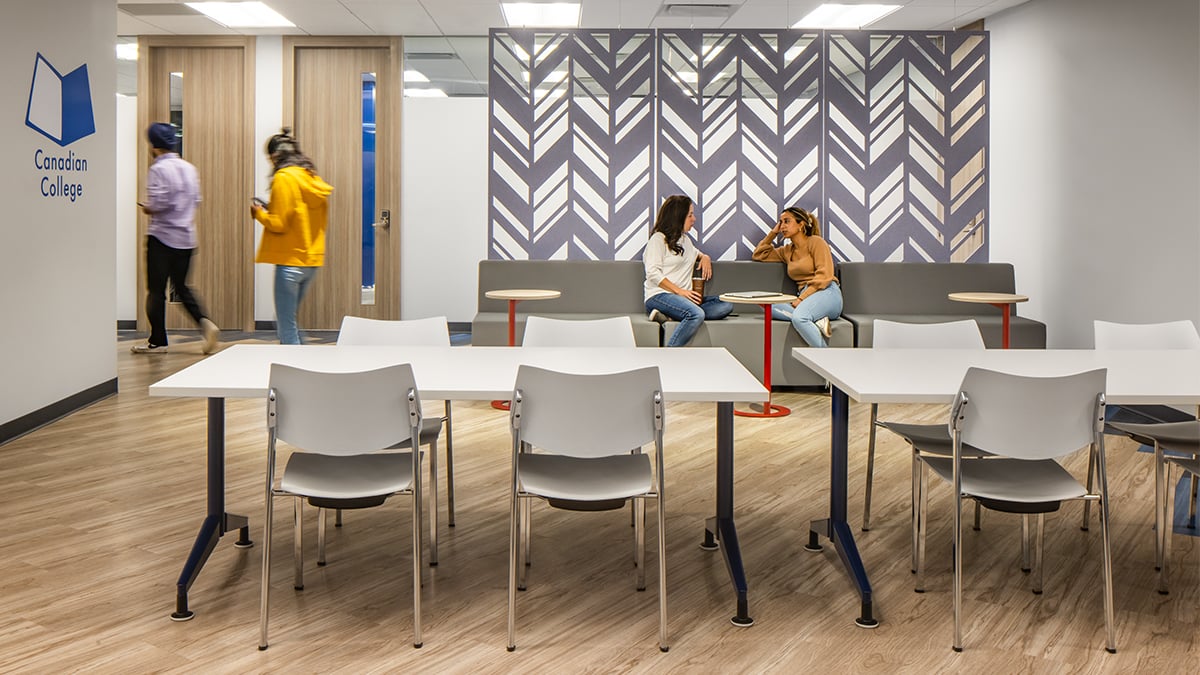From financial aid to fluctuating enrollment, Higher Education Market Manager, Katie Clark, walks us through the changes and challenges impacting colleges and universities this academic year.
With the school year in full swing, it's hard to believe we've already ushered in November. The exciting, and sometimes daunting, kickoff to the school year is long gone and students are deep into studying for their seemingly never-ending exams.
If you feel like there’s been a lot going on in higher education recently, you’re not alone. So much is happening right now. As we navigate the end of another fall semester, let’s take a moment to reflect on the critical changes headed toward us with four things you need to know now in higher education and remind each other that we have what it takes to tackle them all.
1. Burnout and Turnover Among Faculty and Staff
Colleges and universities are struggling to hire and retain staff for every area from facilities management and mental health counseling to dining services.
A recent survey of 4,700 higher education employees by the College and University Professional Association for Human Resources found that 56% of respondents said they were somewhat likely, likely, or very likely to look for another job within the year.
What concerns me is that turnover not only impacts staff morale; it can also ultimately impede students’ ability to foster lasting relationships with mentors. That’s something that already disproportionately impacts students of color. Inside Higher Ed reported that in New York, students of color were less likely to have access to full-time faculty and professors than white students.
To help prevent burnout, colleges can invest in staff growth opportunities with both time and money. Staff not only need the resources for these opportunities, but they also need the space carved out so they can pursue them.
When I was an assistant dean, if I had three students lined up waiting to talk to me and I had a webinar I was supposed to watch for professional development, my students were always going to come first. It’s complicated for staff to balance prioritizing their growth and being available when a student in crisis needs them, but leadership can help by ensuring staff and faculty have protected time to invest in their futures.
Turnover is a problem even at the highest level of leadership. According to the American Council on Education, college presidents stay in their role for an average of 5.9 years, 2.6 less than in 2006. More than half of current presidents plan to step down within the next five years. President turnover disrupts the entire campus community and makes it hard for the university to pursue long-term strategic aims, especially since higher education already moves at a slow pace.
Wake Technical Community College featuring (L) Sela lounge seating and Torsion Air nesting chairs and (R) Doni stack chairs
2. Changes to Financial Aid
The Free Application for Federal Student Aid (FAFSA) was recently updated in advance of the 2024-2025 school year. The changes are meant to help students benefit from more financial aid and to simplify the process, which we know tends to be lengthy and cumbersome.
One of the bigger changes eliminates what’s known as the “sibling discount.” Under new rules, students with siblings who are attending college at the same time will no longer receive a discount. This change is meant to be more equitable for students who have larger gaps in age with their siblings, but it will impact students who are in college right now and who may have received that discount last year.
For the 2020-2021 school year, over 17 million students submitted the FAFSA application. It’s important that schools help communicate to students and families that their financial aid status could change.
3. Supreme Court Decision on Affirmative Action
This summer, the Supreme Court overturned affirmative action in admission decisions. Admissions staff across the country are now rethinking their admissions process, how they read applications, how they recruit students, and how they talk about student diversity.
Some schools like Wesleyan University and Johns Hopkins University are responding to the decision by eliminating legacy admissions. Many schools are having discussions around how to design applications that give students the freedom to share their lived experience with race if they feel so inclined, without asking applicants directly to do so.
The learning landscape will change considerably. Under-resourced and highly competitive universities alike may struggle to recruit a diverse class of students. That can have far-reaching effects.
Research from economists at Harvard University and Brown University found that although less than 0.5% of Americans go to 12 of the country’s most selective colleges, these schools disproportionately influence people in positions of power. Graduates from these schools are 60% more likely to end up in the top 1% income bracket and three times more likely to work at a prestigious company.
As educators, we strive to build campus communities that are diverse in terms of academic and extracurricular interests, geography, race, gender, income, and more. How we do that in the coming years may look a little different.
4. Fluctuating Enrollment in Higher Education
Fewer high school graduates are going to college today than a decade ago. Undergraduate enrollment dropped 15% from 2010 to 2021 at postsecondary degree-granting institutions, according to the National Center for Education Statistics.
These enrollment declines aren’t spread evenly across all higher education. Enrollment at public flagship universities has remained strong, but it has dropped for regional public universities. Enrollment for male students has also dropped more than for female students.
A large portion of this decline occurred during the pandemic, but concerns over student loan debt, the cost of tuition, and whether a college degree actually gives a student a leg up when it comes to full-time employment are also likely contributors to the decline.
If enrollment continues to fall, as population changes seem to predict, there’s expected to be a broader economic impact as some jobs that require a college degree may remain unfilled. Educators and administrators will have to consider how these declines impact their student demographic, school offerings, and how they appeal to prospective students and staff. Some may explore offerings for technical or alternative career paths.
Montana State University featuring Hub modular lounge seating
Look Ahead to Change
Having worked in higher education for over a decade, I can't help but feel the excitement as we approach the midway point of this academic year. We get to watch young people open their eyes to an experience that will hopefully change them in meaningful, lifelong ways.
However, it can also be quite overwhelming to familiarize myself with all the subjects that I wish I could’ve read even more about this year. I hope these insights can help us all look ahead to the changes and adapt to the evolving priorities of our students and institutions.
What other "happenings" and challenges do you anticipate will have an impact on higher education this year? Whether you're a faculty member, student, or designer, I would love to hear your thoughts. Please reach out to me at katie.clark@ki.com.
Related Content
 Blog
Blog
From discovering new interests to developing transferable skills, explore how educators can help prepare students for their careers beyond college.
 Blog
Blog
Start the new year with these helpful tips on teacher burnout recovery. Take care of yourself, set realistic expectations, and know that you are not alone.
 Blog
Blog
Less than one-third of high school graduates will receive a four-year college degree. By dedicating resources to career and technical education, we can set up all students for success.












